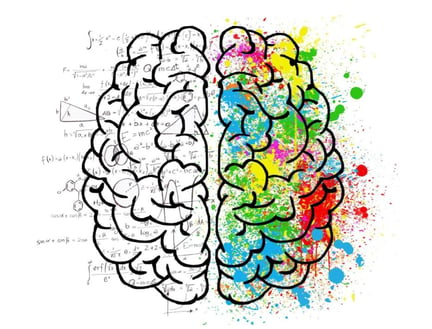
Photo caption: Recent discoveries in neuroscience tell us what artists already know: Art has a positive effect on the brain. Image by ElisaRiva from Pixabay.
If you’re like most artists, it’s likely that you love being in art museums and galleries. It’s a situation that’s difficult to beat, really. You have beautiful works of art, lots of quiet and are surrounded by other art lovers. For most artists, that’s enough of a reason to visit museums on the regular.
It turns out that there’s actually a neurological reason why looking at art is good for you, whether you’re in a museum or not: mirror neurons. It’s these mirror neurons that are responsible for the positive effects that art has on the brain.
Here’s the scoop.
Your Neurons on Beauty
According to the University of Arizona Global Campus, there is a reason that we want to step into a beautiful piece of art when we see it. It has to do with something called embodied cognition.
There are special neurons in the brain, called mirror neurons, which play a critical role in human function, including social functions. It is also because of the mirror neurons that we feel the desire to live within the confines of a beautiful painting, if we can.
They may also be responsible for helping humans understand what the actions of others mean. These neurons turn our impulses, like movement and action, into emotion.
Art and Emotional Processing
We already know that art practices, like drawing, can have a profound effect on our mental health and sense of well-being. It also improves our concentration and memory: It has been proven that artists have better observational skills and memory than non-artists do, generally speaking.
However, even looking at beautiful works of art and being around it appears to have a positive effect on the brain and a person’s health, according to Frontiers in Psychology.
Some attribute this phenomenon to beautiful experiences being associated with mindfulness meditation. This may replicate a type of meditation called visual meditation or visualization, which asks the meditator to mentally focus on an image in their minds. People who meditate are often asked to focus on their breath, and visual meditation replaces the focus on the breath with a focus on a beautiful image.
Final Words on the Effects of Art on the Brain
Being in a museum does put you into contact with beautiful works of art. However, you can observe beautiful works of art at home, either by looking through the virtual exhibits that many of the world’s most famous museum’s offer or by creating your own home-gallery of originals and prints. These treks through the art world not only train your eye as an artist, they also train your mind.
Learn More About Beautiful Works of Art Around the World
From Apprentice Artist to Master: Art Lessons From Da Vinci
Art Fun Facts: 3 Times When Artists Knew More Than Scientists
Cool Artsy Christmas Gifts for Artists

